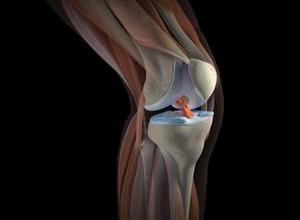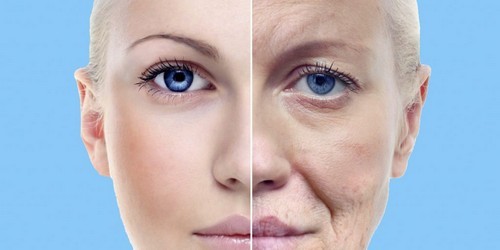You regularly employ methods to rejuvenate the skin, strengthen nails and hair, and the results of short and unstable?
The fact that our skin, hair and nails are nourished inadequately filtered blood with toxins, poisons and impurities. So, unfortunately, no external anti-aging treatments are not capable to change the situation radically.
Let’s look at the problem in more detail.
Clean blood is the health of skin, hair and nails
You have dry or too oily skin? There are more and more wrinkles? Thinning and hair fall out?
You must be a lot of time and money spent on visits to beauty salons, and the problem is still with You.
Unfortunately, different and can not be. Because inadequately filtered blood with poisons and toxins nourishes every cell of our body, including the skin and hair follicles.
The consequences of this scaling, irritation and acne, intense wrinkles, dry, brittle or too oily hair, hair loss.
To allow us to better understand why this is so, let us recall the structure and function of our skin.
Skin is the outer cover of a person. It’s a barrier between the external environment and the human body. Skin performs many important functions. She has a private closed immune system.
With the help of 2.5 million sweat glands, the skin regulates body temperature. It protects internal organs from mechanical impacts (shocks, pressure, friction). The presence of an antiseptic environment on the skin surface protects the body from penetration of pathogenic microbes.
Skin protects humans from the harmful effects of sun rays and supports the inside of the body the required level of moisture.

The skin, and kidney, refers to the organs of the excretory system of man.
It consists of three layers:
- of the epidermis,
- dermis
- the subcutaneous fat.
The outer layer that directly affects the environment, is called the epidermis (lat. epidermis). Its thickness about 0.03 to 1 mm. the thinnest epidermis on the eyelids.
Peeling of the epidermis is a normal physiological process. From the skin daily is separated approximately two billion dead skin flakes. Every three to four weeks cells of the epidermis in norm have to be updated.
Restoration of the skin occurs due to cell division in the basal layer. This is the deepest layer of the epidermis bordering the dermis. It happens mostly at night when we sleep.
Within 3-4 weeks the young cells of the basal layer rise to the surface of the epidermis. During this process they become more flat, dry, lose their cell nucleus and deposited on the surface of the skin a flat and dead, cornified keratin scales, forming a Horny layer. There they are superimposed on each other as the bricks of the fortress wall.
The upper part of the stratum corneum are gradually separated. Normally we don’t have to notice this skin.
The exfoliation process becomes noticeable only in the separation of dead skin cells in large groups (500 – 1000 CC) in the form of flakes.
Under the epidermis is the dermis. It is much thicker layer of the skin (to 2.4 mm). The dermis consists of connective tissue cells and the so-called “ground substance” in which there are collagenous and elastic fibers.
The cells of the dermis produce all components of the basic substance, including fiber. The condition of these fibers depends on whether the skin look tight and toned or flabby and lethargic.
Collagen fiber can absorb and accumulate a lot of moisture. The more moisture they hold, the smoother and more elastic our skin looks.
Wrinkles and sagging skin
Poisons and toxins from inadequately filtered blood chemically as well as just mechanical damage of collagen and elastic fibers. As a result, they either break up into smaller units, or lose their dense structure.
From this they lose the ability to retain moisture. The skin becomes flabby, dry, rapidly growing number of wrinkles.
However, the harm to our skin causing poisons and toxins blood, is not confined to the destruction of existing collagen and elastic fibers. They damage the actual dermis cells that produce these fibers.
The degree of damage to cells and fibres depends on the degree of slagging liver and, consequently, the amount of toxins in the blood. Another important objective is the dermis supply the epidermis with oxygen and nutrients, for example vitamins, proteins, minerals, trace elements and amino acids.
The fact that the epidermis has no blood vessels, and therefore can not eat independently. The dermis is the whole is permeated with many tiny blood capillaries. Normally, these two layers are inextricably linked with each other.
However, as damage to the cells of the dermis with poisons and toxins, this relationship is gradually destroyed. As a result, the epidermis is not getting enough oxygen and nutrients. The consequence of this gray, dull, sagging, aging skin.
Subcutaneous fat – “the trash of our body”
Due to the dermis constant temperature of the body – in the region of 37 degrees. Temperature control is done automatically: the tiny blood vessels (capillaries) in the dermis while the cold constricts and heat expands.
Strong vasoconstriction is often noticeable on the skin surface, then it is called “goose”. When overheating of the body or strenuous physical work, the sweat glands, the roots of which are also located in the dermis, are taken to actively secrete sweat. It acts on the skin surface and there evaporates.
Thus, the skin cools and protects the body from overheating. Poisons and toxins are not adequately filtered blood into the cells of the sweat glands and secreted to the surface with sweat. They are capable to give a sweat is particularly sharp and persistent odor.
Subcutaneous fat is the deep layer of the skin. It can be with thickness from several millimeters to several centimeters. Cellulose consists of loose connective tissue, loops which are filled with fat slices of various sizes.
The layer of fat is deposited primarily on the stomach, sides, buttocks and thighs. It serves as both protection from bumps, thermoerosional, energy depot and garbage in our body.
Nature has so arranged that the fat cells should take from the blood of toxins and waste products in case of their excessive appearance. However, we can safely say, the whole life of modern man, and represents such a case.
Defense against poisoning, the cell is committed to enter into them in fat sarcophagus. Why?
The fact that fat is water – resistant. As a result, the toxins and wastes overgrown adipose capsule, which is like a plastic bag isolates them from the rest of the cells. As the blood of modern man, every second there are new and new portions of the toxins, the fat cells operate in a constant increase fat sarcophagus.
That’s why dropped as a result of dieting and grueling workouts pounds after some time again with us, good, if not abundantly! In the tissue of fiber are numerous nerve endings, and hair roots. There, from hair follicles, at an angle to the surface of the skin to sprout hair.
Around each hair follicles are one or two sebaceous glands that produce sebum. They lubricated the surface of the skin and hair.
Sweat and body odor
Very important role of skin as an organ of the excretory system of man. In performing this function are leading of the sweat and sebaceous glands.
Sweat contains:
- 98% of water,
- 1% of dissolved salt,
- 1% – products of metabolism (urea, uric acid, ammonia), toxins and wastes from the blood.
Sebaceous glands secrete during the week from 100 to 300 g of sebum. It is composed of cholesterol, proteins, fatty acids, salts, toxins and waste products received in the sebaceous gland from the blood.
That is why in advanced stages of slagging liver from the surface of the human body constantly emanates an unpleasant smell.
Trying to get rid of him, the man several times a day visiting a shower and trying new deodorants. However, a few hours after a shower the smell is felt again.
Acne and pimples
Acne and pimples is a skin changes, associated with inflammation and disruption of the sebaceous glands. Such changes are typical for certain skin diseases, especially for acne.
This disease is also called acne disease (acne).
In adolescence, acne is found in most people. However, the presence of acne on the skin of an adult is likely to indicate serious problems in the body. How does causes acne and blackheads? First, the sebaceous glands and the formation of sebum is regulated by our sex hormones (produced from the ovaries in women and testes in men).
When violations of hormonal sebaceous glands start secreting an excessive amount of fat.
Because the poisons and toxins from inadequately filtered blood poison our gonads (ovaries in women, testicles in men, see women’s health, men’s health), the hormonal background of many modern people is broken.
On the other hand, as we noted above, sebaceous glands perform the excretory function, i.e., they are selected along with the fat toxins that came from the blood to the surface of our body.
Constant flow to the cells of the sebaceous glands of toxic substances from the blood forcing them to work with the increased load. The result of the ducts of the glands are clogged selected fat containing toxins, they settled bacteria from the external environment, the inflammation begins.
Clogging of the sebaceous glands and inflammation lead to skin damage and scarring. Sweat, sebum and dead skin cells normally connected to the skin surface in a thin film. It should consist of fatty acids, amino acids, cholesterol and lactic acid.
This creates a film on the skin surface slightly acidic environment (pH 5 to 6) – so-called “acid (lipid) mantle of the skin”. It’s in the norm must protect the skin from foreign fungi and bacteria, as in a chemically acidic environment the pathogens usually do not survive.
However, since the skin of the modern man works hard as an organ of the excretory system, along with the sweat and grease on its surface constantly released toxins that have arrived with blood in sebaceous and sweat glands.
It is quite natural that they significantly change the composition and properties of acidic mantle. It loses its protective properties, and fungi and bacteria easily colonize skin pores and sebaceous and sweat glands.
So many people over the years struggle with acne, blackheads and “black dots”, but this battle still seems illusive.



